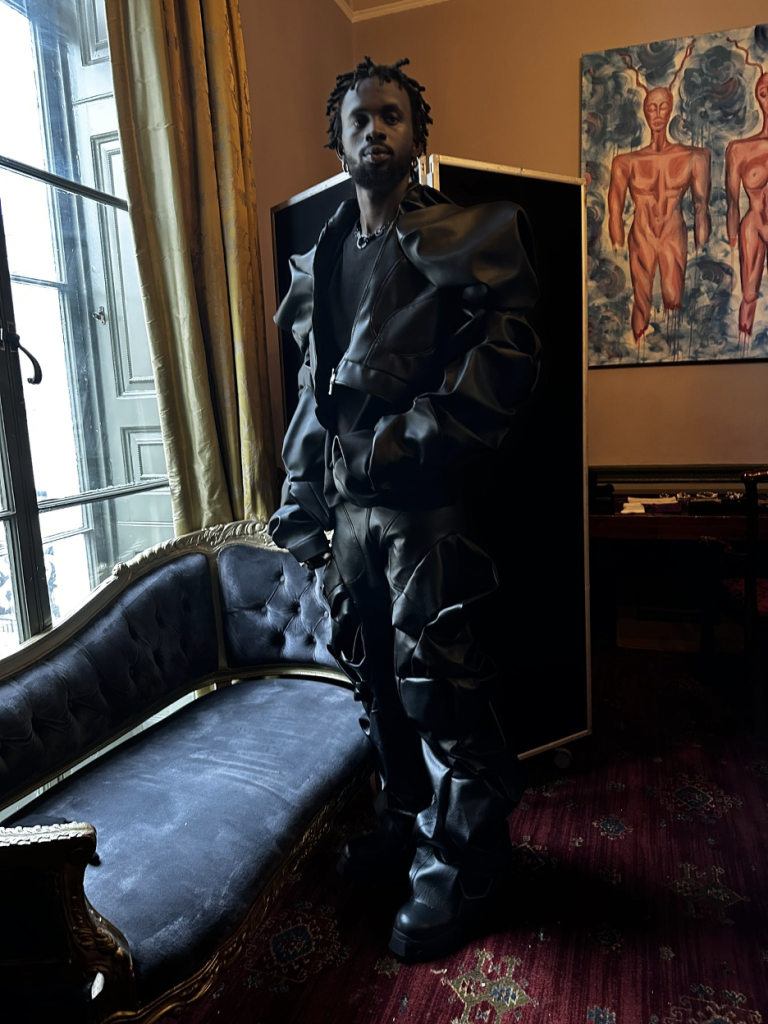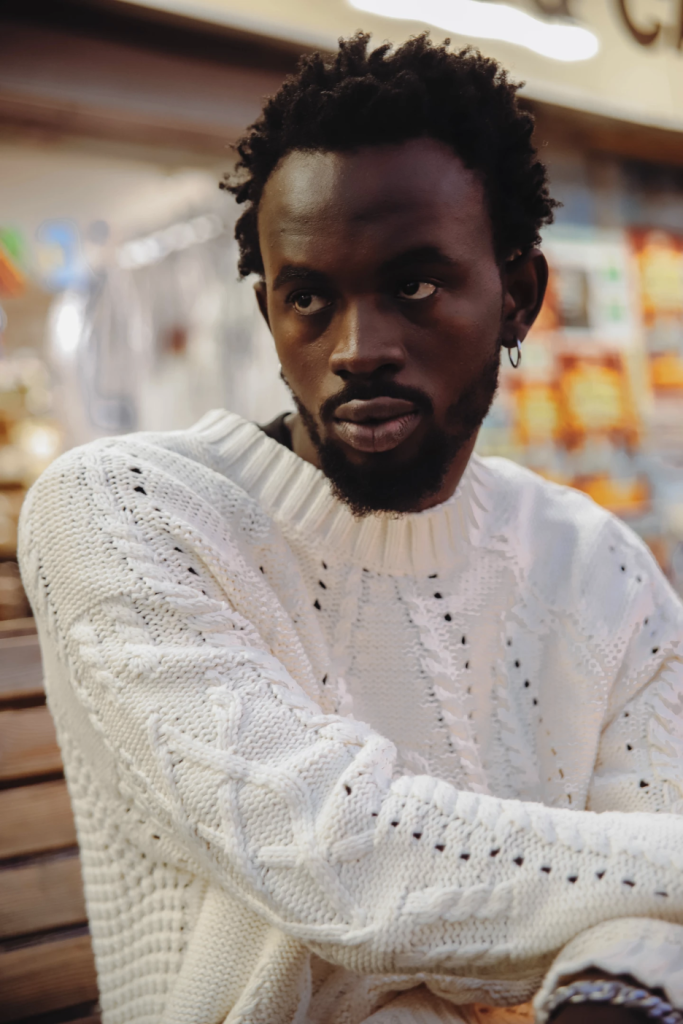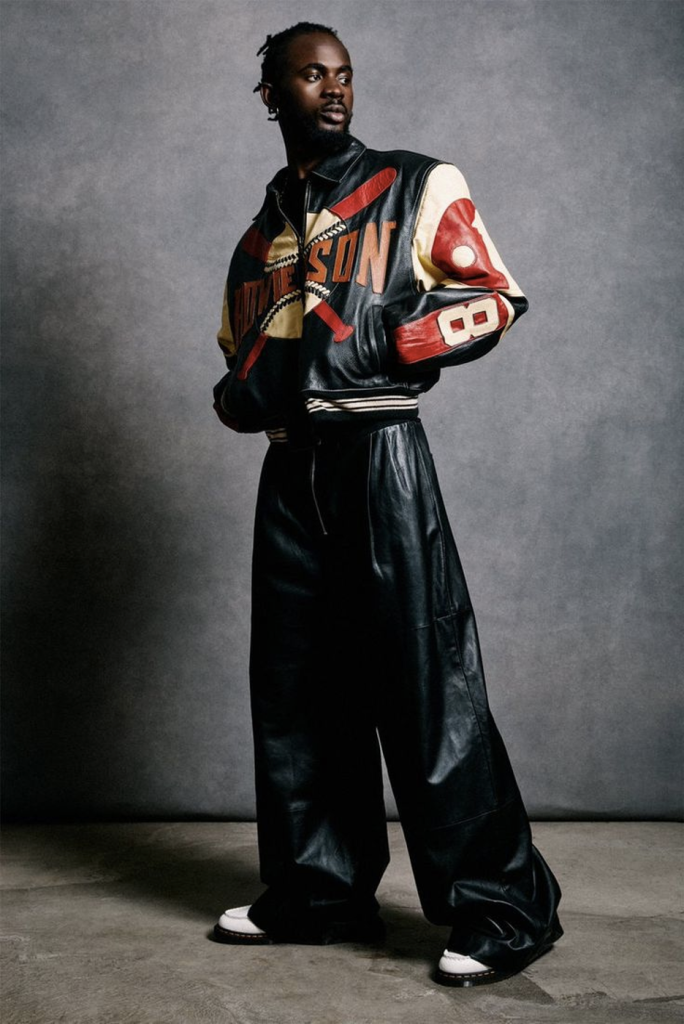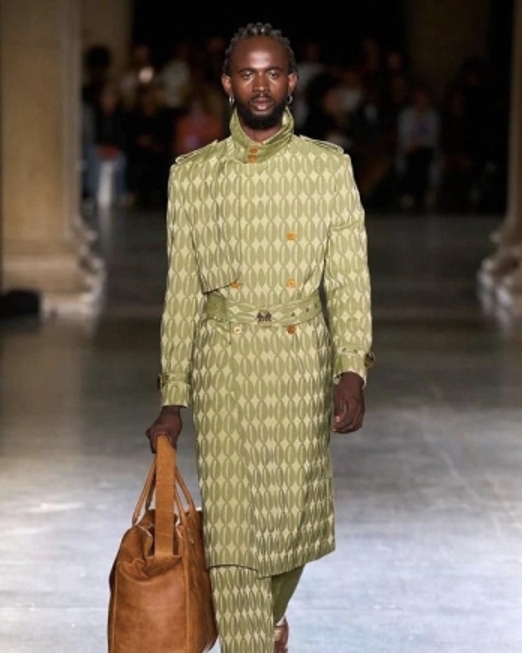Black Sherif, at 22 years old, has risen to become one of Ghana’s youngest superstars. Evidently, Blacko, as he is often referred, has had a deep-rooted passion for music since the age of 17. His breakout single “First Sermon,” released in 2021, propelled him into the spotlight, with earlier recognition for “Money” in 2020.

Despite the sudden explosion of his career, Blacko’s, intentional process has resonated not only in his music but also in his fashion choices. His choice of outfits makes for an interesting look.
More so, fans are not only on the outlook for Blacko’s latest music but his aesthetical outfits on the gram. Let’s delve deeper into his signature style, his symbolic choices and how it reflects his music and fans connection.

Core Aesthetics
Black’s fashion reflects his music and personality – raw, unfiltered and deeply personal. Often characterized by an angsty pop-punk twist, he draws inspiration from his “Sad Boyz” persona. A self-propagated movement born from the struggles and aspirations of his upbringing in Accra’s Zongo community.
In a 2022 interview with Okay Africa, Black Sherif spared time to reveal the foundation of the “Sad Boyz” movement. In insight the movement has become his core brand. “I am not sure we planned Sad Boyz. I don’t smile when I take pictures most of the time. We are sad boys because there is nothing to laugh about. Accra hard bro.”

Unlike many trend-chasers, Black Sherif sources most of his wardrobe from Kantamato. “Kanta” known to every Ghanaian in the capital, is the country’s most popular hub of second-hand, clothing locally termed, “Foose.” This revelation with his fashion champions his individuality and sustainability.
Blacko’s signature look consists of bootcut jeans, skinny tops, durags, and boots/sneakers, exuding a cool, effortless vibe with grit.
Fashion Blend
Black Sherif’s style often pulls inspiration from the 90s and early 2000s, evident in his baggy pants, cropped tops, and oversized fits.

Black is his dominant colour, symbolizing the “Sad Boyz” theme and reflecting his introspective nature. Occasional pops of red add a hint of vibrancy. He blends accessories comprising of some layering silver chains, skull motifs, and bullet details on belts and wrists adding a rebellious edge to his outfits.
Blacko’s fashion is highly rooted in reality and inspired by his tough upbringing – the everyday struggles of Ghanaian youth. His music and fashion connect with audiences facing similar challenges. His fashion and personality go beyond sadness. For him, it represents resilience, ambition and the fight for success despite hardship.
Brands and Collaboration
While primarily relying on second-hand finds, Black Sherif’s association with Kantamanto has become a trademark of his unique style. His unique and distinctive style earned him a deal with the Italian sportswear brand Ellesse, in 2023 further solidifying his fashion influence.
Nonetheless, Black Sherif’s style isn’t static. He has experimented with bolder looks like the “Zaama Disco” cropped hoodie and the AfroFuture leather dress, showcasing his sartorial flair.
He occasionally incorporates brighter colours and patterns, suggesting a possible evolution from the “Sad Boyz” aesthetic.
His recent historic outing was at the 2024 London Fashion Week. The young artiste donning a striking ensemble crafted by UK-based designer Labrum London, exuded confidence as he strutted down the runway.

Foday Dumbuya, the CEO of Labrum London and designer for Blacko’s outfits, the “Shine Collection” sheds light on the African journey from struggle to triumph, acknowledging those that never lose sight of their vision or end-goal.
Black Sherif’s style goes beyond what’s popular. It makes a strong point about celebrating individuality, being real, and expressing oneself. His “Sad Boyz” movement has become more than simply a trend—it’s a way of life and a sensation in its own right. It inspires admirers all over the world because it reflects sincerity, personal narrative and a celebration of individuality.
Written by Jude Tackie